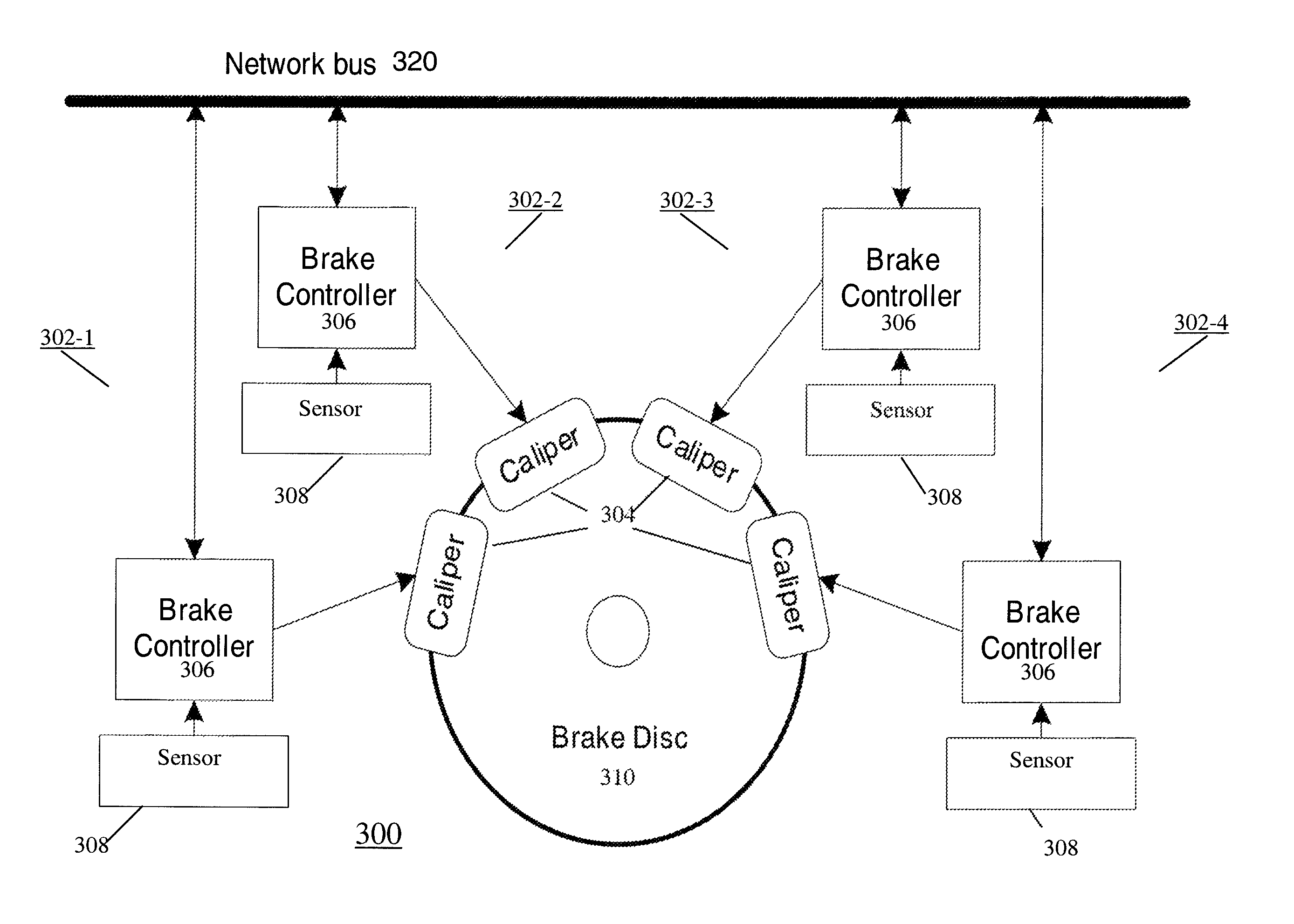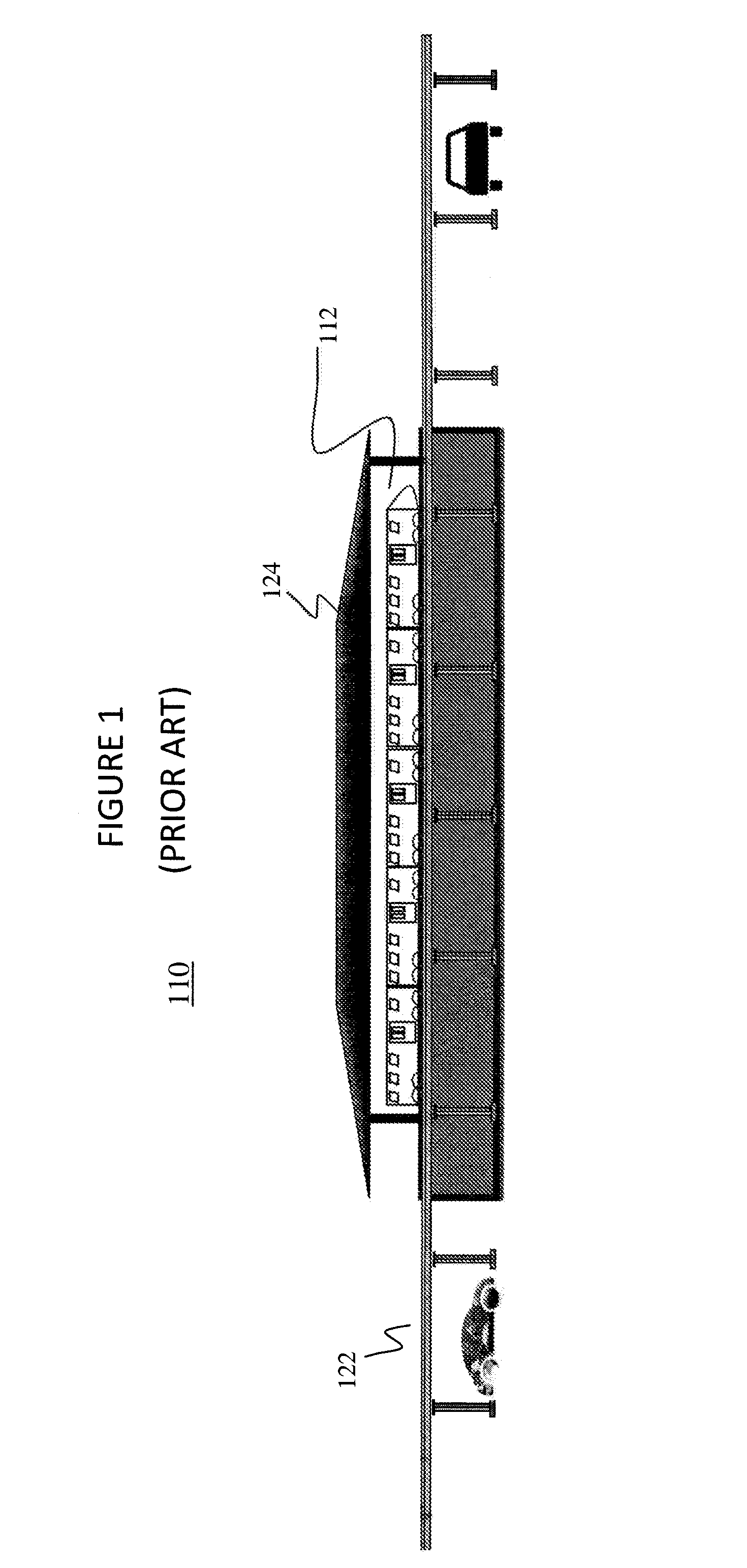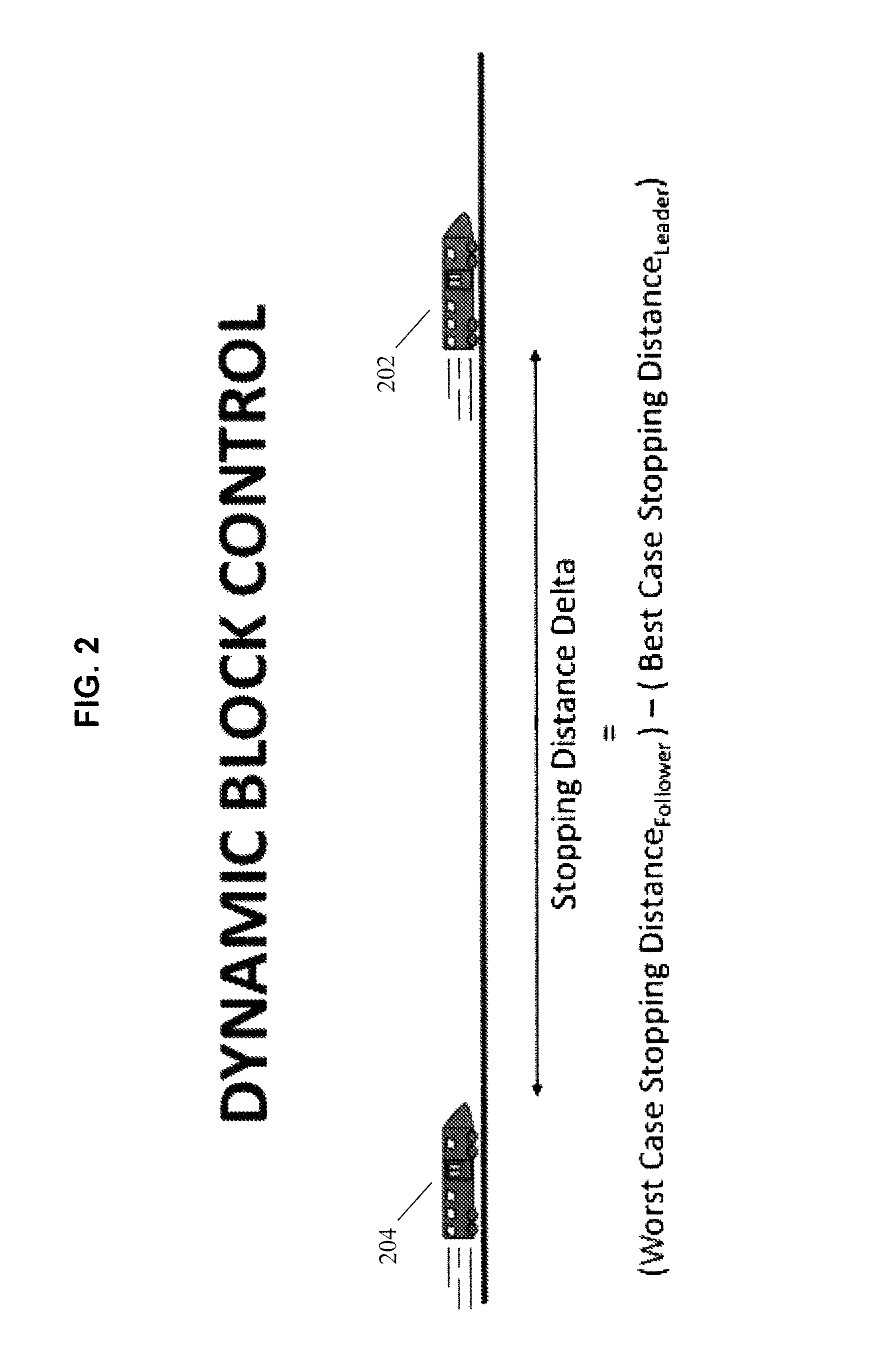Method and apparatus for controlled braking in fixed guideway transportation systems
- Summary
- Abstract
- Description
- Claims
- Application Information
AI Technical Summary
Benefits of technology
Problems solved by technology
Method used
Image
Examples
case 1
[0057]All braking units functional and share the braking effort evenly. Since 6,860 N of force are needed, each braking unit contributes 858 N.
case 2
[0058]Two braking units on the same axle fail and produce no braking force. Since the failures are on the same axle, the two functioning brake units on the axle with the failed units must each provide 1,715 N of force to bring the total force on the axle with the failures to 3,430 N and 6,860 N for the whole vehicle.
case 3
[0059]Two braking units on different axles fail and produce no braking force. Since the failures are on different axles, the functioning braking units on both axles must increase the braking force to 1,143 N to compensate and maintain the total braking force for each axle at 3,429 N and for the whole vehicle at 6,860 N.
PUM
 Login to View More
Login to View More Abstract
Description
Claims
Application Information
 Login to View More
Login to View More - R&D
- Intellectual Property
- Life Sciences
- Materials
- Tech Scout
- Unparalleled Data Quality
- Higher Quality Content
- 60% Fewer Hallucinations
Browse by: Latest US Patents, China's latest patents, Technical Efficacy Thesaurus, Application Domain, Technology Topic, Popular Technical Reports.
© 2025 PatSnap. All rights reserved.Legal|Privacy policy|Modern Slavery Act Transparency Statement|Sitemap|About US| Contact US: help@patsnap.com



